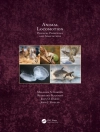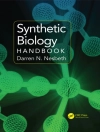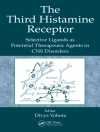This book attempts to provide a comprehensive look at all of the pathologies of muscles that are likely to be encountered in treating sports-related injuries. Its purpose is to give the practitioner a guide for identifying injuries and choosing the best therapeutic strategy. The first part presents the consensus view of current knowledge: the physiology of lesions and their prognosis as well as their anatomy, clinical imaging, and treatment. Then each of the muscles is described in turn, with a review of anatomy, clinical examination, the results of imaging, and therapeutic choices for acute and chronic injuries. A major section is dedicated to imaging, with the emphasis on which diagnostic methods are best for specific injuries and how to use diagnostic imaging to determine the most suitable therapeutic strategies. Special care has been taken to provide high-quality illustrations that clearly show how to identify the lesion of the damaged muscle. A wealth of illustrations, many incolor, are included. Finally, the book concludes with some clinical cases and technical notes relevant to treatment of sports-related muscle injuries.
สารบัญ
GENERAL PRINCIPLES.- Prognosis of the lesions and injury mechanisms (Predicting – preventing – bring recovery).- Structural anatomy of the muscle.- Functional anatomy of the muscle.- Muscle strengthening.- Off the settlement to the sport.- Muscular adjustments during physical activity.- Clinical semiology.- Ultrasound and MRI semiology.- Principles of the different treatments.- Terminology and classification of muscle injuries in sport: Clinical classification.- Terminology and classification of muscle injuries in sport: Ultrasonography and MRI.- Terminology and classification of muscle injuries in sport: Critical analysis–consensus statement.- Repair of muscle damage (3 phases). NON TRAUMATIC MUSCULAR INJURY.- Anatomic Variant (and differential diagnostic).- Painful Muscles.- Compartmental syndrome. Popliteal artery entrapment syndrome.- Traumatic rhabdomyolysis.- Myopathy.- Muscular neuropathy.- EXTRINSIC MUSCULAR INJURY. Thigh–Calf.- INTRINSIC MUSCULAR INJURY.- Cervical Spine Muscle. Example: the cervical spine of the rugby man.- Subscapularis Muscle.- Biceps-Triceps Brachial Muscles.- Greater Pectoral Muscle.- Anterior Abdominal Wall Muscles.- Adductors Muscles.- Ilio-psoas Muscle.- Rectus Femoris Muscle.- Hamstring Muscle.- Lateral Rotator Muscles (Pelvi-Trochanterious).- Gluteus Muscle (Greater–middle–last gluteal muscles).- Fascia lata.- Short and Longus Peroneal Muscles.- Anterior Tibial and Long Extensor Muscles.- Posterior Tibial Muscle.- Long Flexor Muscle of Great Toes.- Plantar Muscle.- Triceps Muscle of Leg.- Myositis Ossificans.- DOMS.- CLINICAL CASES.- Hamstring and femoral stress fracture.- IMAGING SPECIFICITIES.- Interventional imaging–PRP-Corticoides.- RMI Diffusion – Perfusion.
เกี่ยวกับผู้แต่ง
Dr Bernard Roger is consultant and official radiologist of numerous French national teams (football, rugby and athletics). He is currently working at the Aspetar – Orthopaedic and Sports Medicine Hospital (Doha, Qatar).
Dr. Ali Guermazi is Professor of Radiology, Vice Chair of Academic Affairs and Director of the Quantitative Imaging Center at Boston University School of Medicine. He is Deputy Editor of Radiology (RSNA) and Expert Consultant in Sports Medicine Imaging for multiple American and European teams.
Dr Abdalla Skaf is chair of the radiology department and sports medicine of the Hospital do Coração (HCor) São Paulo – Brazil. He is also the President of the Teleimagem group in Brazil; President of the Brazilian MRI committee as well as radiology consultant for soccer teams and various national Sports societies.












